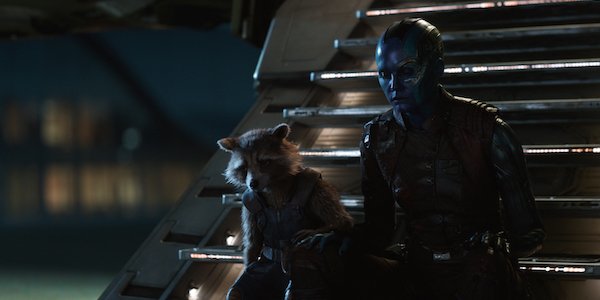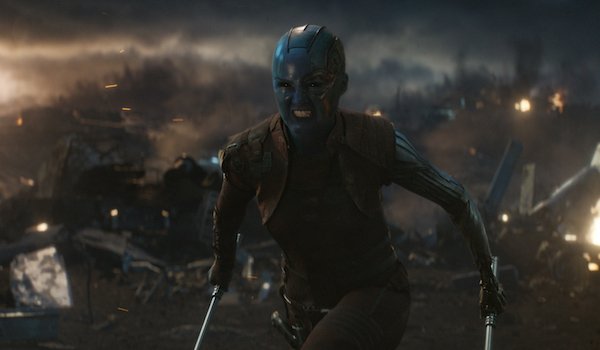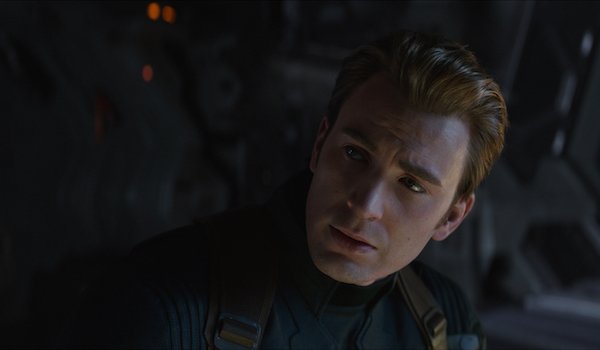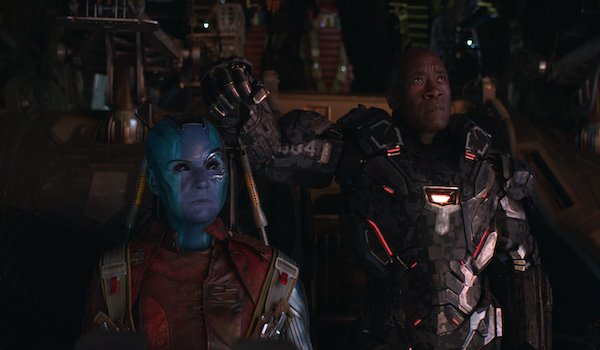How The Avengers: Endgame Time Travel Actually Works

Warning: MAJOR SPOILERS for Avengers: Endgame are ahead! Seriously, if you haven’t seen the movie yet and want to go in as fresh as possible, bookmark this page and come back once you’ve seen the latest MCU movie.
If you followed along with the production of Avengers: Endgame closely, you almost certainly guessed at one point or another that time travel would be featured into the story. Numerous leaked set photos indicated that Endgame would be revisiting key moments from past MCU movies, and Janet van Dyne’s warning to Scott Lang in Ant-Man and the Wasp about not falling into a time vortex while in the Quantum Realm teased that this other dimension would be the apparatus through which the heroes would engage in temporal shenanigans.
That did indeed end up being the case in Avengers: Endgame, but just like any other story that relies on time travel, it’s a complicated plot element to deal with. No matter what kind of mechanics a story’s particular version of time travel uses, there will inevitably be questions about how it all works. Such is the case with Endgame, meaning that, as great as it is, it’s also arguably the most difficult MCU movie to follow.
Nevertheless, we here at CinemaBlend have chatted with one another, and after much deliberation, we’ve deduced how time travel worked within Avengers: Endgame. Let’s get the most obvious fact out of the way first.

We’re Not Operating Off Back To The Future Rules
Those of you who grew up watching the Back to the Future trilogy probably view these movies as providing the time travel standard. Well, Avengers: Endgame isn’t following those rules. The way time travel was used in this movie, changing the past does not automatically rewrite the future. Everything that happened from the end of Avengers: Infinity War to five years in the future, i.e. 2023, still happened, no matter what changes the heroes who went on this time travel heist made in the past. Tony Stark’s daughter Morgan is still around, the people who were dusted are reuniting with their loved ones five years later rather than living in a world where they never disappeared in the first place, etc.
The way this is able to work is because the Quantum Realm is transporting these characters through space as well as time. Divergent timelines are still possible (more on that in a bit), but since they’re entering and exiting from the same physical location within the Quantum Realm, that allows them to return to the timeline from which they originated from.
These rules also mean that a character isn’t bound to the fate of what happens to their past or future self. Take Nebula. In addition to following along with the main version of her, who we’ll call 2023 Nebula, the 2014 Nebula, i.e. the version of her from right at the beginning of Guardians of the Galaxy, also became an important player in the story, as she managed to get to 2023 and bring in Thanos and his forces to their future so that this version of the Mad Titan could obtain the six Infinity Stones. Later in Endgame, 2014 Nebula is killed by 2023 Nebula, but rather than immediately being wiped out of existence, 2023 Nebula is still alive.
Your Daily Blend of Entertainment News
Then there’s Gamora, who died in Avengers: Infinity War, but her 2014/Guardians of the Galaxy self was also brought to 2023 with Thanos’ army. The original Gamora still perished when Thanos tossed her off that cliff on Vormir, but the 2014 Gamora is now in the “present,” and while she never spent any time with the Guardians of the Galaxy, at least this allows her to be a participant in Guardians of the Galaxy Vol. 3.

Creating Split-Off Timelines Is Still Possible
Upon traveling back to 2012 with Iron Man, Captain America and Ant-Man, Hulk was tasked with retrieving the Time Stone from Doctor Strange, only at this point in history, the still-alive Ancient One has it in her possession, and she’s not willing to relinquish it at first. She conjures a magical illustration similar to the one Doc Brown used in Back to the Future Part II and explains that by removing an Infinity Stone from its proper place in time, a new, darker timeline will be created. So for the Time Stone, if one were to take it from 2012 and never return it, Dormammu, the ruler of the Dark Dimension, would be able to successfully conquer our realm a few years later.
Bruce Banner’s solution for this problem is for he and his allies to bring all the Infinity Stones back to 2023 to use them, and then bring the Stones back to their proper places in time shortly thereafter; that way, there shouldn’t be any problems. Ultimately, the Stones are returned to where and when they were originally retrieved, thus neutralizing any apocalyptic possibilities. That said, despite their best efforts, the heroes still inadvertently ended up changing portions of the past, and while said changes didn’t appear to affect the 2023 they came from and returned to, it does suggest that those changes resulted in an alternate timeline being created.
As an example, 2012 Loki is able to escape with the Tesseract, but because Iron Man and Captain America then went to 1970 and retrieved the Tesseract from there, Loki’s escape no longer happens in the main sequence of events. However, hypothetically, there is still an alternate timeline where Loki is running free with the Space Stone following his defeat in New York. Could this somehow factor in to the upcoming Loki series that will air on Disney+?

There’s Still A New MCU Past
Just because the 2023 that the main Avengers: Endgame heroes returned to is the one they left from doesn’t mean that the MCU as a whole doesn’t have a new past. Most of it seems to be relatively intact, but arguably the best example of how things aren't 100% the same as they were before was with Steve Rogers. After returning all the Infinity Stones to their proper places in time, he took one last trip to the 1940s and stayed there so he could live out the rest of his life with his one true love, Peggy Carter. The elderly Steve was still alive in 2023 and was sitting only paces away from where his younger self left, and he bequeathed his vibranium shield to his friend Sam Wilson, a.k.a. Falcon.
There are likely some other changes that affected the MCU’s past, some of which may be fully presented in the years to come, but overall, the main MCU timeline appears to be stable. Nevertheless, Avengers: Endgame had a difficult task ahead of it making time travel work, and despite the best efforts of the creative minds involved, not everything lined up as well as we would have liked. Which brings us to our final section…

Questions We Still Have
Just because we were able to lay out the basic beats of time travel in Avengers: Endgame doesn’t mean that we don’t have any questions about it. As stated earlier, time travel is always going to come with issues no matter what story it’s being used in. For instance, Red Skull said the price for obtaining the Soul Stone was “everlasting,” so is it even possible to return it to Vormir after it’s been used? And even if Steve did place it back there (imagine the awkwardness of him running into Red Skull), does that mean that Black Widow’s death was also undone? I’m guessing not since she wasn’t among the heroes at Tony Stark’s funeral, but until Marvel officially announces if the Black Widow movie is a prequel or not, we won’t 100% know for sure.
And then there’s the issue of the Power Stone on Morag in the year 2014. Even though Steve Rogers returned the purple artifact there, War Machine and Nebula still knocked out that era’s Peter Quill to get it earlier in the movie. If Quill is still unconscious, does that mean that in this sequence of events, Korath the Pursuer successfully seized the Power Stone on Morag and brought it to Ronan the Accuser, thus erasing everything that happened in Guardians of the Galaxy?
Let’s also not forget the mere act of bringing Thanos and his forces to 2023 means that the Mad Titan wasn’t around to carry out his original quest for the Infinity Stones. That wouldn’t change the fact that the heroes needed to go time to fix everything, but with Hulk returning everyone who was dusted back to life, conceivably that means that timeline-wise, if not experience-wise, The Decimation never happened in the first place. Maybe this can all be attributed to the alternate timelines explanation from earlier, but there are still many paradoxical pieces in motion.
However, perhaps the biggest question of all is if this method of time travel paves the way for a proper MCU multiverse. We’ve already explored the concept of other dimensions in Doctor Strange and the Ant-Man movies, but those are realms where the laws of physics don’t behave in the same way. We have yet to explore the traditional parallel universe/timeline tropes that have been part of superhero comics for decades. With the X-Men and Fantastic Four set to be incorporated into the MCU, perhaps it’s through the multiverse that these characters will be brought into play, not to mention that the multiverse allows for drastically different versions of characters we know and love to be introduced, ala the Ultimate Universe, Marvel Zombies, etc.
Rest assured, we’ll be talking more about time travel and the other elements of Avengers: Endgame in the weeks, months and probably even years to come. For now, be sure to read CinemaBlend’s review of the movie and look through our 2019 release schedule to learn what other major motion pictures are coming out later this year.

Connoisseur of Marvel, DC, Star Wars, John Wick, MonsterVerse and Doctor Who lore, Adam is a Senior Content Producer at CinemaBlend. He started working for the site back in late 2014 writing exclusively comic book movie and TV-related articles, and along with branching out into other genres, he also made the jump to editing. Along with his writing and editing duties, as well as interviewing creative talent from time to time, he also oversees the assignment of movie-related features. He graduated from the University of Oregon with a degree in Journalism, and he’s been sourced numerous times on Wikipedia. He's aware he looks like Harry Potter and Clark Kent.
